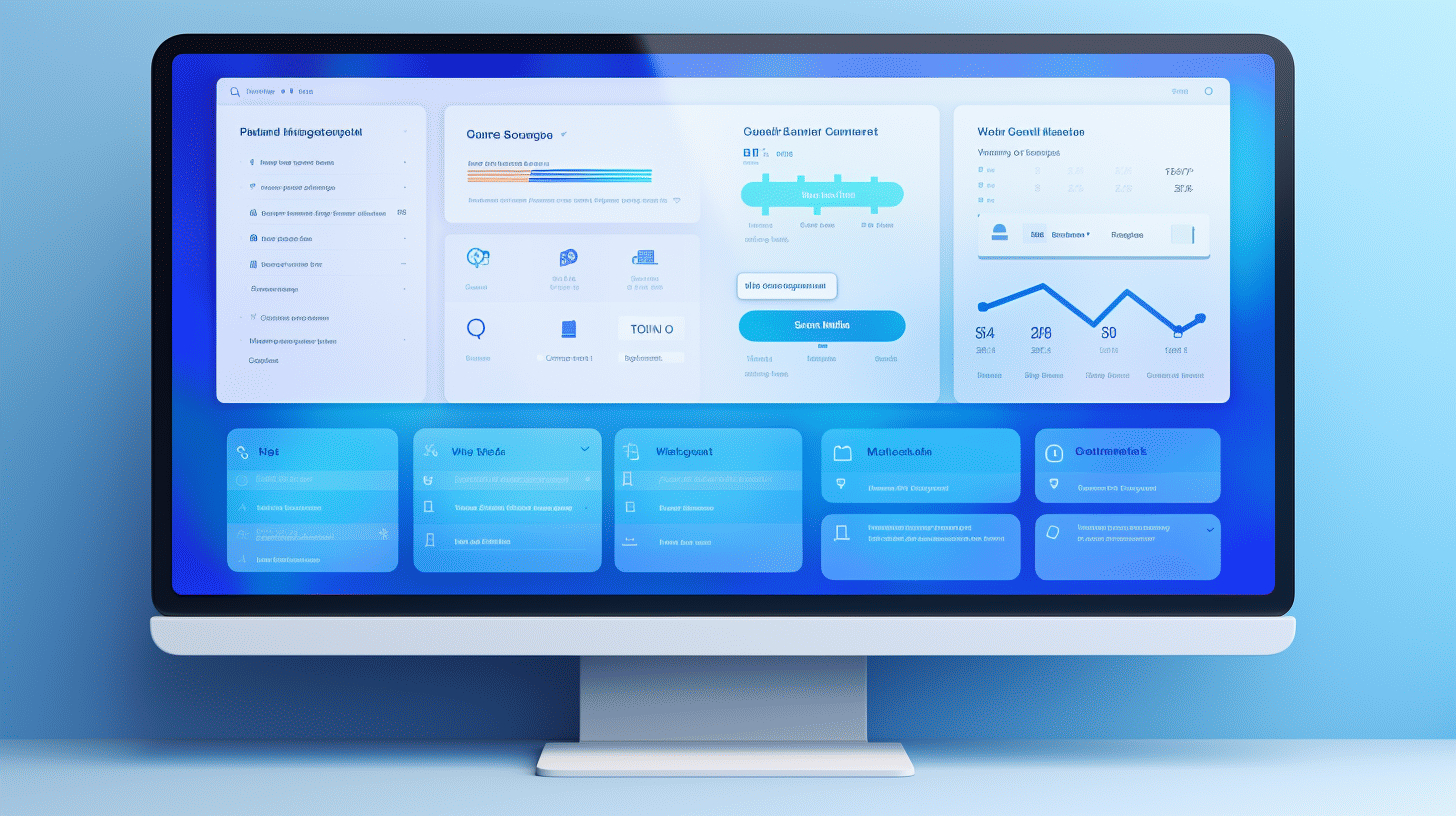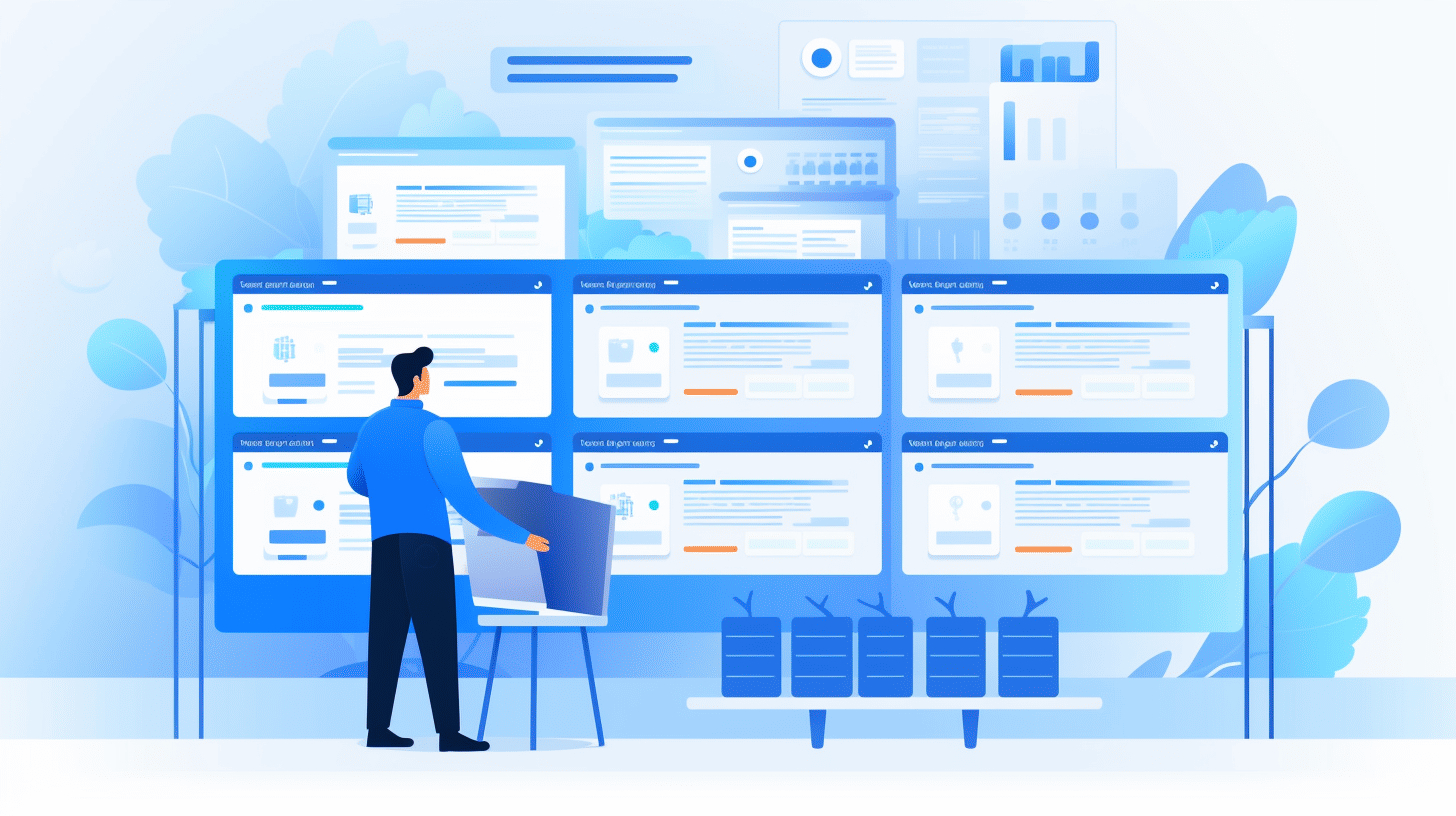In today’s digital landscape, websites have become the cornerstone of any successful business or online venture. They serve as the primary platform for customers to interact with brands, make purchases, and gather information. As a web developer, it’s crucial to stay ahead of the curve and utilize the latest technologies to develop modern, high-performing websites. One such technology that has gained significant traction in recent years is Headless WordPress.
Headless WordPress is an innovative approach to web development that separates the frontend and backend of a website. Instead of relying on WordPress’s traditional themes and templates, developers can leverage APIs to fetch content from the WordPress backend and display it using any frontend technology. This decoupling of the presentation layer offers a plethora of benefits, such as increased flexibility, improved scalability, and better performance.
In this article, we will explore the best practices for Headless WordPress development. We will delve into the world of CMS (Content Management System) market, understand WordPress’s dominance in the industry, and take a closer look at Headless WordPress and its benefits. Additionally, we will discuss the economic outlook on the Headless CMS software market and provide insights into frontend development technologies, WordPress development services, and practices. Finally, we will highlight the importance of enhancing user experience and provide actionable recommendations for developers.
So, buckle up and get ready to embark on a journey into the exciting realm of Headless WordPress development. Whether you are a seasoned developer or just getting started, these best practices will equip you with the knowledge and tools to create cutting-edge websites that leave a lasting impression on your users. Let’s dive in!
The CMS Market and WordPress’s Role
In today’s digital landscape, content management systems (CMS) play a crucial role in helping businesses and individuals create and manage their websites with ease. With so many options available, it can be overwhelming to choose the right CMS for your needs. However, one CMS stands out from the crowd with its impressive market dominance and widespread popularity – WordPress.
Understanding the CMS Market
The CMS market is a competitive space, with multiple players vying for the top spot. There are various CMS options available, each with its own set of features and capabilities. Some of the popular CMS platforms include WordPress, Joomla, Drupal, and Shopify, to name a few.
WordPress’s Dominance in the Market
When it comes to CMS market share, WordPress reigns supreme. It has firmly established itself as the go-to CMS for millions of websites across the globe. Here’s why WordPress is the preferred choice for website owners:
- Easy to Use: WordPress’s user-friendly interface makes it accessible even to those with little to no technical knowledge. Its intuitive dashboard and drag-and-drop functionality allow users to create and update their websites effortlessly.
- Vast Plugin Ecosystem: With over 58,000 plugins available, WordPress offers unparalleled flexibility and customization options. From SEO optimization to e-commerce functionality, there’s a plugin for almost every need imaginable.
- Responsive Themes: WordPress boasts a vast library of beautiful and responsive themes. These professionally designed templates allow website owners to create visually stunning websites without the need for extensive design skills.
- Strong Community Support: WordPress has a large and active community of users and developers. This means that getting help, finding resources, and staying up to date with the latest trends and best practices is just a click away.
WordPress’s CMS Market Share
WordPress’s dominance in the CMS market is truly remarkable. Consider the following statistics:
- WordPress currently has a usage share of 64.2% in the CMS market[1].
- WordPress powers 43% of the internet, indicating its significant market share[2].
- WordPress is used by 37% of all websites[3].
- WordPress holds a staggering 65.2% market share in the content management space[4].
It’s clear that WordPress’s influence in the CMS market is unrivaled. Its user-friendly interface, vast plugin ecosystem, and strong community support have made it the preferred choice for individuals and businesses alike.
In today’s dynamic digital landscape, it’s essential for website owners to stay ahead of the curve. One exciting trend that’s gaining traction is “Headless WordPress,” which combines the power of WordPress with decoupled front-end frameworks. To learn more about how Headless WordPress can streamline your website management, check out this article on Headless WordPress Tools.
Introduction to Headless WordPress
In today’s digital landscape, businesses and content creators are constantly seeking innovative ways to deliver their message to a wider audience. One such innovation is the concept of Headless WordPress, a modern approach to website development that offers unprecedented flexibility and control. But what exactly is Headless WordPress, and why should you consider using it for your next project?
What is Headless WordPress?
At its core, Headless WordPress refers to an architecture where the WordPress backend (the content management system) is decoupled from the frontend (the user interface). In a traditional WordPress setup, the backend and frontend are tightly interconnected. However, with Headless WordPress, developers are free to use a wide range of frontend technologies like React, Angular, or Vue.js to create a rich and interactive user experience.
The concept of “headless” refers to the separation of the frontend (the “head”) from the backend (the “body”) of the website. This decoupling allows for greater flexibility and scalability. Content is stored and managed in WordPress, while the presentation and user interaction are handled by a separate frontend application.
Benefits of Headless WordPress
Headless WordPress offers a plethora of benefits that make it an enticing option for businesses and developers alike. Here are just a few advantages of using a Headless WordPress setup:
- Scalability and Data Sharing: With Headless WordPress, you can easily scale your website across multiple platforms, including mobile apps, smart TVs, and IoT devices. The decoupled architecture allows you to share data across different applications effortlessly, ensuring a consistent user experience across all platforms.
- Design and Content Flexibility: By using Headless WordPress, you gain complete control over the design and presentation of your website. Since the frontend is separate from the backend, you can customize every aspect of the user interface to match your brand’s unique style and requirements.
- Improved Performance: One significant advantage of Headless WordPress is its ability to deliver lightning-fast websites. By separating the frontend and backend, you eliminate unnecessary bloat and optimize the performance of both components. This ultimately leads to faster loading times, improved SEO rankings, and better user satisfaction.
- Expanded Content Possibilities: Another benefit of Headless WordPress is the freedom to deliver content in various formats. Whether it’s a traditional webpage, a mobile app, or even an AR experience, you can leverage the power of WordPress to create and manage versatile content that engages your audience.
To explore these benefits in more detail, click here. Headless WordPress opens up a world of possibilities for businesses, developers, and content creators to build innovative and immersive web experiences. With its flexibility, scalability, and performance optimization, it’s no wonder why Headless WordPress is gaining popularity in the digital ecosystem. So, are you ready to embrace the power of Headless WordPress?
Economic Outlook on Headless CMS Software Market
The global market for headless CMS software is experiencing substantial growth, poised to reach new heights in the coming years. With a projected value of USD 1,628.6 million by 2027 and a robust compound annual growth rate (CAGR) of 20.44%, it is evident that this sector is witnessing increased adoption and demand.
One of the key factors driving the growth of the headless CMS software market is the increasing need for seamless content delivery across multiple channels and devices. As companies strive to provide personalized and consistent experiences to their audience, headless CMS solutions offer the flexibility and scalability required to deliver content efficiently.
Let’s take a closer look at the economic outlook for the headless CMS software market, providing insight into regional trends and future growth opportunities.
United States Headless CMS Software Market Outlook
The United States holds a significant position in the headless CMS software market, with a projected value of US$ 1,300 million by 2032 and a CAGR of 19.8%. This can be attributed to several factors that are shaping the market landscape:
- Increasing adoption of cloud-based technologies: Cloud-based headless CMS software solutions are gaining traction in the market due to their ability to provide scalability, cost-effectiveness, and easy accessibility. As businesses in the United States prioritize digital transformation, the demand for cloud-based headless CMS software is expected to grow significantly.
- Rise in e-commerce and online retail: The rapid growth of e-commerce and online retail has created a demand for advanced content management systems that can handle large volumes of product information and deliver it seamlessly across various channels. Headless CMS software enables businesses to efficiently manage their product catalogs and provide personalized shopping experiences, driving its adoption in the United States.
- Emphasis on omnichannel marketing: The United States is known for its vibrant marketing landscape, where brands strive to engage customers through multiple touchpoints. Headless CMS software allows businesses to manage content across various channels, including websites, mobile apps, kiosks, and IoT devices, ensuring a consistent brand experience across all platforms.
In conclusion, the economic outlook for the headless CMS software market is promising, with significant growth opportunities in the United States and globally. As businesses focus on delivering personalized experiences, managing content efficiently, and embracing digital transformation, the demand for headless CMS software is expected to soar. Stay tuned as this dynamic market continues to evolve and shape the future of content management.
Best Practices for Headless WordPress Development
Introduction:
Developing a headless WordPress website requires careful consideration of various factors that contribute to its success. By understanding frontend development technologies and APIs, utilizing WordPress development services and practices, and prioritizing user experience, developers can create a powerful and efficient headless WordPress solution.
Understanding Frontend Development Technologies and APIs
In order to successfully implement a headless WordPress website, developers must have a solid understanding of frontend development technologies and how to integrate APIs effectively. Here are some key points to consider:
- React, Angular, or Vue: Choose a frontend JavaScript library/framework that best suits the project’s requirements. These libraries facilitate efficient rendering and data binding, resulting in a smooth and responsive user interface.
- RESTful APIs: Utilize WordPress’s REST API to fetch and manipulate data from the WordPress backend. This enables seamless communication between the frontend and the content management system.
- GraphQL: Consider using GraphQL alongside the REST API for enhanced flexibility and efficiency. GraphQL allows developers to precisely request the data they need, reducing unnecessary data fetching and improving performance.
- UI Component Libraries: Leverage UI component libraries like Material-UI or Bootstrap to accelerate frontend development. These libraries provide pre-designed components that can be customized to match the website’s branding and design.
WordPress Development Services and Practices
Optimizing the development process is crucial when working with headless WordPress. Here are some best practices to consider:
- Version Control: Use a version control system like Git to track changes, collaborate with team members, and revert to previous versions if necessary.
- Code Quality: Write clean and modular code to enhance maintainability and scalability. Adhere to coding best practices, such as following naming conventions and organizing code into separate functions and components.
- Testing and Debugging: Conduct comprehensive unit tests and integration tests to identify and fix any potential issues. Take advantage of debugging tools and logging frameworks to streamline the debugging process.
- Performance Optimization: Optimize website performance by minifying and compressing CSS and JavaScript files. Utilize caching plugins or content delivery networks (CDNs) to improve page load times.
Enhancing User Experience
One of the key benefits of implementing a headless WordPress solution is the ability to enhance user experience. Consider the following practices:
- Responsive Design: Ensure that the frontend is fully responsive and optimized for different screen sizes and devices. This allows users to access and navigate the website seamlessly on desktops, tablets, and mobile devices.
- Accessibility: Follow accessibility guidelines to ensure that the website is usable by all users, including those with disabilities. Provide alternative text for images, use semantic HTML, and incorporate proper contrast ratios for improved readability.
- Personalization and Dynamic Content: Leverage user data and preferences to provide personalized content and recommendations. Utilize dynamic content features to display real-time information and updates, creating a dynamic and engaging user experience.
By implementing these best practices, developers can leverage the power of headless WordPress to create high-performance websites with enhanced user experiences.
Security with Headless WordPress: Discover how to ensure website security and reliability while using headless WordPress for your development needs.
Conclusion
In conclusion, embracing headless WordPress development offers web developers a myriad of benefits, including increased flexibility, improved performance, and streamlined content management. By decoupling the front-end and back-end of a website, developers can take advantage of the latest technologies, create engaging user experiences, and adapt to changing digital landscapes more effectively.
To make the most of headless WordPress development, it’s crucial to understand the various frontend development technologies and APIs available. Leveraging WordPress development services and practices can also ensure a smooth and efficient development process. Additionally, prioritizing user experience and optimizing performance will help create websites that captivate and engage visitors.
With Managed-WP, you can take your headless WordPress development to the next level. Our premium managed WordPress cloud hosting platform simplifies your infrastructure, giving you the freedom to focus on creating exceptional digital experiences. Plus, our expert team is available 24/7/365 to provide problem-solving assistance whenever you need it. Start optimizing your headless WordPress development with Managed-WP today: Link to Managed-WP
Remember, in the fast-paced digital landscape, staying ahead of the competition requires innovative approaches. Headless WordPress development combined with reliable hosting solutions like Managed-WP offers web developers the tools they need to create cutting-edge websites with ease. So, don’t hesitate to explore the possibilities and unleash the full potential of your WordPress projects.
Frequently Asked Questions
- What is headless WordPress development?
Headless WordPress development is an approach where the WordPress backend (CMS) is decoupled from the frontend (presentation layer), allowing developers to use different technologies for each. The frontend can be built using frameworks like React or Angular, and the CMS backend remains as WordPress.
- Why would developers choose headless WordPress development?
Developers may choose headless WordPress development for increased flexibility, scalability, and performance. It allows developers to build highly interactive and dynamic websites or mobile applications using modern frontend frameworks while leveraging the robust content management capabilities of WordPress.
- What are the best practices for headless WordPress development?
Some best practices for headless WordPress development include: 1. Properly decoupling the backend and frontend, 2. Using the WordPress REST API to fetch data from the CMS, 3. Optimizing performance by caching API responses, 4. Implementing server-side rendering for better SEO, and 5. Ensuring proper security measures are in place.
- Is headless WordPress development suitable for all types of websites?
Headless WordPress development is not suitable for all types of websites. It is most beneficial for websites or applications that require complex or highly interactive user interfaces, such as e-commerce platforms, multi-platform applications, or websites with heavy frontend interactivity.
- Can I use my existing WordPress themes and plugins with headless WordPress development?
While it is possible to use some existing WordPress themes and plugins with headless WordPress development, it may require customization or modification to work seamlessly with the decoupled frontend. Developers often prefer building custom themes or using themes specifically designed for headless WordPress development.



















